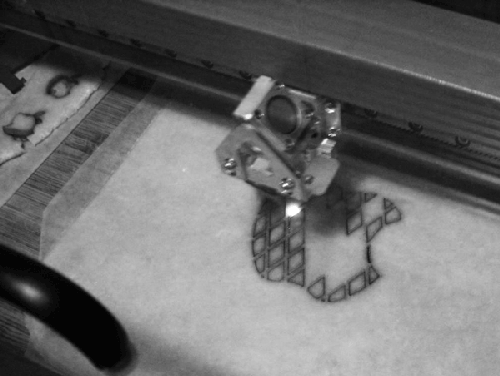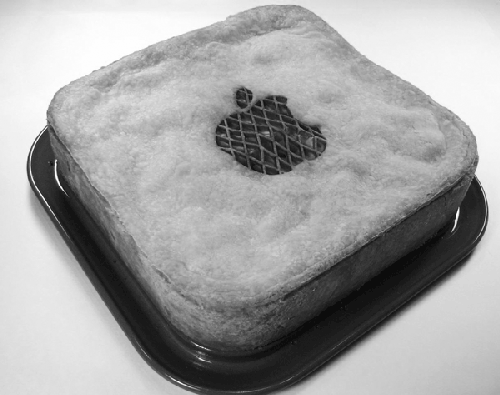If a
griddle cooks foods by adding heat, it should follow that an anti-griddle “cooks”
foods by removing heat. PolyScience, known by many chefs for its sous vide
recirculating units, makes a product that does exactly that: its anti-griddle cools
down whatever you put on the griddle surface.
You can make a do-it-yourself version by using dry ice, ethanol, and a sheet of
stainless steel. You’ll need a solid chunk of stainless steel (plan on ordering a
piece from a distributor such as McMaster-Carr). I have a 6″ × 6″ / 15 cm × 15 cm slab
that normally lives in my freezer; it’s handy for those times when you want to cool
down a small item quickly. Here’s how it works:
Rig up a bed of crushed dry ice. Try using a cookie sheet placed on top of a
wooden cutting board. The cookie sheet will hold the dry ice/ethanol slurry, and
the cutting board will provide insulation between the extremely cold cookie sheet
and your countertop. Alternatively, if you have the lid to a Styrofoam container,
using the inside, indented part can serve both purposes.
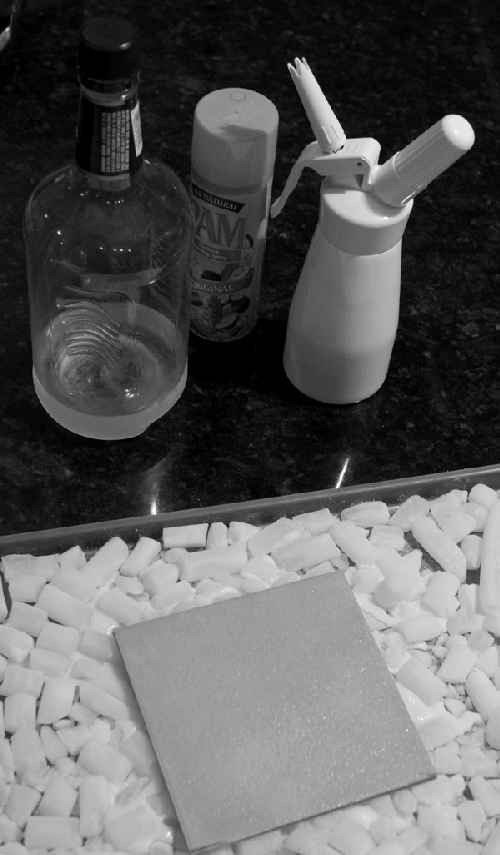
Pour a small amount of ethanol onto the bed of crushed dry ice—enough to
create a level top. (You can use rubbing alcohol or cheap vodka.) The ethanol will
remove any air gap between the pieces of dry ice and the stainless steel griddle,
and it won’t cause the dry ice to froth in billowy clouds like water would.
Plop the square of stainless steel on top of the ethanol-topped dry ice. It
should be a complete contact fit, just like a heat sink on top of a CPU.
Spray or coat the top surface of the stainless steel with a nonstick cooking
spray, butter, or oil.
Drop your food to “cook” on the surface, smoothing it out into a pancake shape
if desired. After 10 seconds or so, use a spatula to flip it and set the other
side. As a starter, try whipping some cream up in a bowl with a bit of sugar and
chocolate syrup.
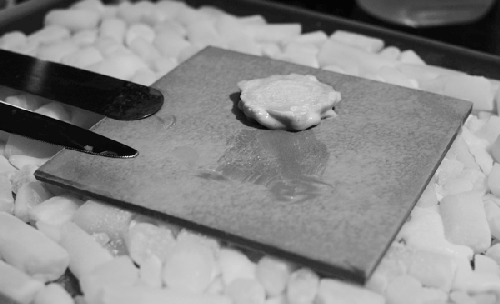
Since heat is a form of
energy (heat = kinetic energy of molecules in a system), adding energy to a system can
cause it to heat up, which is why a hot dog gets hot when electricity runs through it.
(Hot dogs happen to be made of materials—proteins, fats, a little bit of salt—that are
conductive enough for this to work.)
P.S. LEDs light up when “plugged in” to a hot dog! 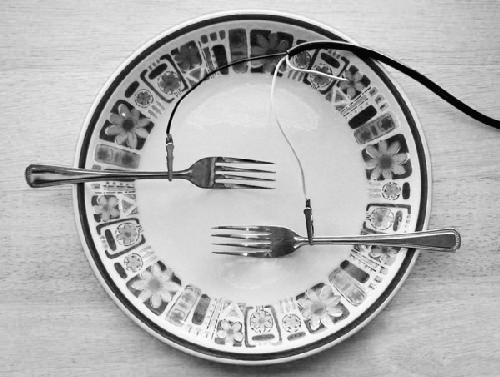
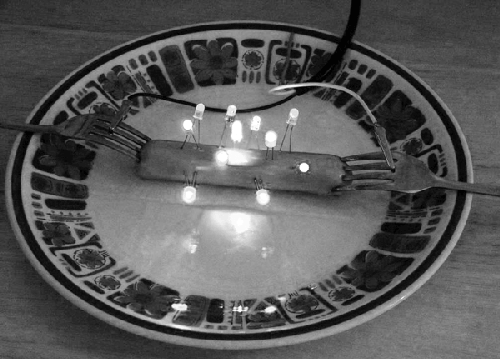 |
You too can make an Apple apple pie. Lenore and Windell used
their laser cutter and a square springform pan, but with care, you can use a knife to
cut the logo and a square glass pan to bake the pie. (If you’re not a purist shooting
for an edible replica of a Mac Mini or Apple TV, a standard round pie will taste just
as good.)
